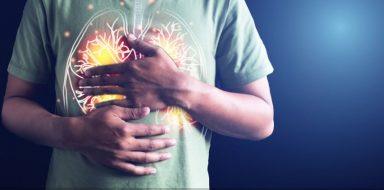Can Hormones Cause Overactive Bladder?
We often think of overactive bladder (OAB) as a disease. As an RN, I often have patients tell me that they suffer from OAB. However, OAB is actually a collection of symptoms:
- Urinary urgency: the strong need to urinate that is difficult to ignore
- Urge incontinence: leakage of urine; this typically occurs in conjunction with urinary urgency
- Urinary frequency: urination occurs more than eight times in a 24-hour period
- Nocturia: waking up at night more than once to urinate
Due to this collection of symptoms, some people may wonder: Can hormones cause overactive bladder? The Urology Care Foundation states that approximately 30% of men and 40% of women suffer from the symptoms of OAB. As humans, by nature we want to know the cause of our health conditions. Could hormones play a part in the symptoms of OAB?
What Is the Relationship Between Hormones and Overactive Bladder?
We’ve all likely heard of menopause and perimenopause. Let’s talk about those definitions for a moment.
Menopause is the final menstrual period a woman will experience. Once there is a lack of menstruation for 12 months, a woman is said to be menopausal.
Perimenopause is the period leading up to menopause. Perimenopause can last for several years and can cause lots of changes in the body due to fluctuating hormone levels.
The main culprit that may affect OAB is estrogen. Estrogen is the female sex hormone that is made in the ovaries. Before perimenopause and menopause, a steady amount of estrogen is supplied by the ovaries. Once the body goes into perimenopause and menopause, the estrogen levels begin to plummet. This can affect the body in many ways, one of which is that the muscles around the urethra begin to weaken.
Do Hormones Worsen Overactive Bladder?
Menopause and perimenopause are characterized by:
- Changes in the cycle (these changes make the cycle different than the normal cycle)
- Hot flashes
- Changes with the vagina
- Changes in bladder control
- Trouble with sleep
- Changing feelings about sex
- Body and mood changes
According to Healthline, “A survey of 351 women in China showed that 7.4 percent had OAB. They also found that women with menopausal symptoms tended to have a higher risk for OAB and symptoms of OAB.”
In one word – maybe; hormones maybe make OAB symptoms worse. Not everyone who is menopausal or perimenopausal will develop OAB symptoms. In fact, sometimes OAB symptoms may be caused by something else entirely. For example, sometimes hormones can increase the risk of urinary tract infections (UTIs), which can mimic OAB symptoms.
Can Hormones Be Controlled?
It may be tempting to treat OAB symptoms by replacing estrogen levels with estrogen creams or patches. However, to date, there is insufficient evidence to support that these treatments are effective.
At this time, any hormone treatments prescribed to treat OAB are considered off-label, which means it is a drug that has been FDA approved for one purpose of treatment, and not for others, such as treating OAB.
This article will explore the worst drinks for lung cancer, looking at the top culprits and potential treatment options; learn more.
Self-Care Treatments for OAB
There are a variety of self-care treatments that are useful in treating OAB; these can be used, regardless of what the cause is.
Pelvic Floor Exercises
More commonly known as Kegel exercises, these exercises strengthen the pelvic floor and the urinary sphincter. Strengthening these muscles reduces the bladder’s involuntary contractions.
Maintaining a Healthy Weight
Placing excess weight on the bladder can worsen symptoms. Losing weight can improve symptoms, particularly stress incontinence.
Scheduling Toilet Trips
Though it may seem repetitive and time consuming, making a schedule for toileting allows your bladder to get used to urinating on a schedule, lessening the chance that you will suffer from the urge of incontinence. Try to schedule bathroom breaks every two to four hours, even if you do not feel the urge to urinate.
Wear Absorbent Pads
Using absorbent pads or undergarments may seem embarrassing but it can protect clothing and avoid embarrassing accidents. It can also improve your quality of life! There are a variety of options available.
Bladder Training
Bladder training involves stretching out the time that you use the bathroom when the urge to urinate is felt. For example, when the urge is felt, practice waiting 30 minutes. Gradually work your way up to urinating every three to four hours.
According to Mayo Clinic, “Bladder training is possible only if you're able to tighten (contract) your pelvic floor muscles successfully.” Basically – work on the pelvic floor exercises while bladder training!
Talk to Your Doctor
No matter your age, if you feel you show signs of OAB and have bladder problems, talk to your doctor. They'll be able to properly diagnose you and execute the proper treatment plan, so you and your health can find some ease.







